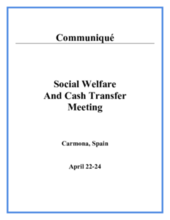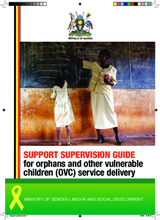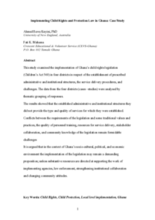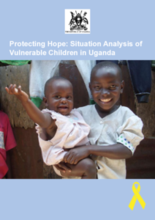Demographic Data
|
Sources: World Bank, UNICEF, UNDP HDR 2015, DHS 2013 |
Displaying 13481 - 13490 of 14554
This study aims to compare perceived life improvement and life satisfaction among double orphans in 3 main care arrangements (group home, AIDS orphanage, kinship care) in 2 rural Chinese counties.
This report, prepared for UNICEF East and Southern Africa Regional Office (ESARO) assesses the capacity in Malawi, South Africa, Swaziland and Zambia to manage alternative care systems for children.
This paper shares the philosophy and key components of the African development initiative Giving Hope that works with youth caregivers through an asset-based empowerment methodology. The approach facilitates the restoration of youth caregivers’ sense of self, belonging, power, and collective responsibility.
Experts gathered in Carmona Spain to examine the results of policy relevant systemic reviews on social welfare and cash transfers. Meeting delegates explored the findings of reviews on integration of social welfare services and cash transfers in Ghana, Chile, Zimbabwe, Malawi and Kenya.
This guide aims to facilitate provision of supervision, technical support and quality assurance for OVC services and interventions by different stakeholders in Uganda.
The current assessment is the fourth in a series of independent assessments examining core systemic issues in Michigan’s child protection system.
This study examined the implementation of Ghana’s child rights legislation (Children’s Act 560) in four districts in respect of the establishment of prescribed administrative and institutional structures, the service delivery procedures, and challenges.
Each “case study” chapter in this book provides a rich description of the development, current status, and future of residential care in countries from Brazil to Botswana.
In this paper, the authors commence by discussing the over-representation of infants in child protection services in Australia, the vulnerability of infants and infancy as a foundational developmental stage for later outcomes.
The Situation Analysis aims to increase the understanding of the scope of the problem of vulnerable children and the response to it, including the full spectrum of core services, in order to facilitate country-wide planning and to inform current and future programming efforts.









